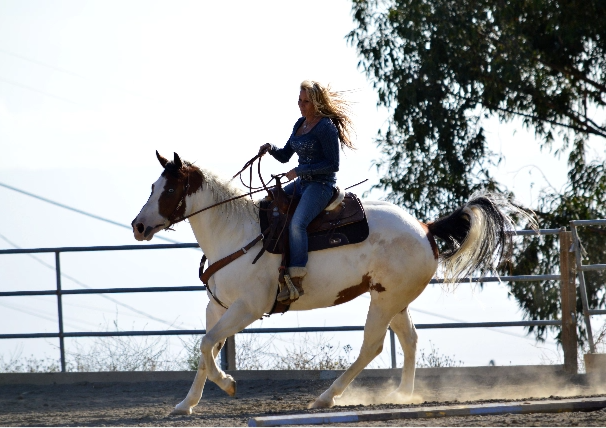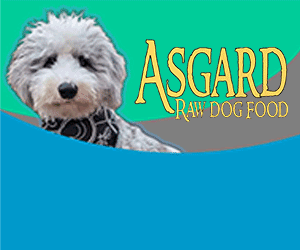“By Kristin Hermann”
What are the rider’s three natural aids? They are the legs, seat, and hands. And it is these aids that communicate to the horse to get the desired result of riding. I ask every new student if they know what the three natural aids are, and I get responses like the head, voice, calf, or back. Yes, these are all correct, but the official answer is different. Each of our three natural aids works in combination, and this is how we ride!
Simply the legs of the rider ask the horse to go forward, and the horse moves forward through the rider’s balanced seat to the bit or rider’s hands. Each natural aid has its part to play in the world of riding. And after basic riding is accomplished, each aid’s function becomes more refined.
The rider’s inside leg is called the active leg; it asks the horse to go forward. When the rider’s inside leg squeezes and says go forward, the horse’s abdominal muscles shorten, resulting in the horse’s inside hind leg moving. The rider’s outside leg is called the passive leg. Its job is not to ask the horse to move forward but to keep the horse’s hind end from swinging out. Even though it has a job, it is called passive because it is not the leg that says to move forward.
The rider has two rein aids or two hands to talk to the horse: the inside rein and the outside rein. And like the leg aids, each hand or rein has a different job. The inside rein is not just the inside rein; it is called the softening rein, and the outside rein is called the supporting rein. The rider’s inside legs ask the horse to move, and then the rider’s inside rein asks the horse to soften in the neck by bending around the rider’s inside leg. If the horse starts to ‘fall in” because of bending inside, then the outside supporting rein is there to keep the horse from falling in! Of course, we can use the inside leg too. We never use one aid or the other it is always a combination of aids.
Coordinating these three aids on a moving horse is not easy. But this is what makes a rider. I tell everyone the secret to riding is the coordination of the aids ~ legs, seat, and hands used in timing with the rhythm of the horse’s gaits.
And now the rider’s seat. The seat is not just the glute muscles of the rider, but the whole torso makes up the rider’s seat. The rider’s core/seat is to balance and follow the horse’s back or top-line motion. A rider’s seat is not to constrain how the horse moves. Many non ,riders think we sit on the horse and squeeze for dear life to stay on; this vice grip seat is not how it is done. A good rider sits on the horse’s back and balances. A good seat is balanced side to side, allowing the horse to come through.
In addition, the seat or torso has to have two natural curvatures of the spine to absorb the horse’s motion. The rider has to sit on the sitting bones of the seat, not the lower spine or the coccyx. Sitting on the coccyx rounds the rider’s back, and I call this tortoise riding! Some have called it pocket riding or sitting on the pockets.
As the rider develops finesse by applying all three natural aids in unison with the horse, they will eventually use the seat for more refinement. But for the beginning rider, the seat must first learn to follow and absorb the horse’s motion before influencing the horse. The best way to develop a seat is to ride bareback, so whenever a student has the opportunity, we get them on bareback. They learn to apply their aids while keeping balanced on the horse’s back without leaning or collapsing when signaling the horse.
So a quick review. The rider’s inside leg asks the horse to step forward, the horse’s back goes through the rider’s seat, and the rider’s inside rein asks the horse to bend in the direction of travel (we train primarily on circles). As the inside leg keeps the momentum if needed, the rider’s outside rein keeps the horse from falling in by supporting it. As if that is not enough, the rider has to learn how to apply these aids (inside leg and rein plus outside rein) without losing the balance of the seat or torso. It sounds like a lot, but this is the beginning of riding a circle on a horse. It is essential to know what you are doing and why. The learning process is as follows; first, we consciously figure out what we are doing, and then unconsciously do it. Then eventually, riding happens! ( Like learning to drive a car or play a musical instrument.)
Each of our three natural aids has a purpose, and when I became a student of classical riding, I was given a list of books and studied. In addition, as a working student, I took five lessons a week. I highlighted the books and asked questions, and it was like college! I can still quote the books today. And I am still learning, buying books, and sharing them with my students!
When I teach, I like to share the why in lessons. It is not just do this and do that. The secret to harmonious riding is coordinating the three natural aids on the horse, and this is a perpetual undertaking for all riders. Once we master basic riding, we plateau for a little while and refine the aids as we advance.
Riding is a pilgrimage; it is something that never ends. The good riders take lessons, read the books, and get on as many different horses as possible to develop a feel. Riding is a feeling you develop with your legs, seat, and hands. You can know in your head, but you are a passenger until you can apply it physically. Finesse or coordinating the three natural aids is the secret to riding! And how do we develop that coordination? By riding!
“Riding is, therefore, an ongoing, never-ending, challenging process. That aspect makes riding so intelligent and significant an effort. One merely strives, never arrives.” — Charles de Kunffy.



